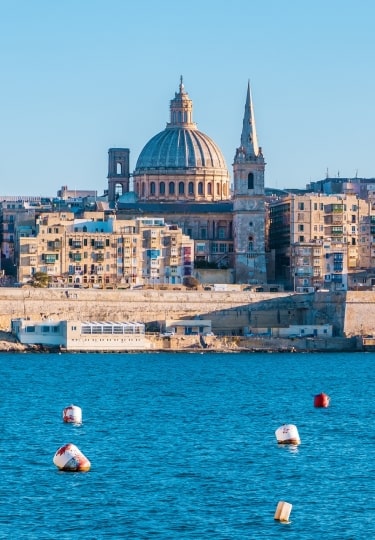A first glimpse of Valletta’s aptly named Grand Harbour is one of those experiences you’ll remember forever. Massive ramparts and the towering, honey-colored buildings of this 16th-century fortified city overlook two long, natural inlets, constantly buzzing with water traffic. It’s a truly awe-inspiring sight.
Malta’s capital occupies a prime position on a cliff overlooking Grand Harbour and Marsamxett Harbour, standing guard over this rocky speck of an island in the far south of the Mediterranean, midway between Sicily and North Africa. And while Valletta is renowned as a showpiece of grand Baroque architecture, it is also a living, working port where narrow alleyways lead to intriguing little shops, cafés and bars.
There’s always something new to explore; some layer of history to unpeel, art collections to admire, and cutting-edge restaurants to try. Discover some of the secrets of Valletta and let the city enchant you with its beauty and rich culture.
Why Visit Valletta?
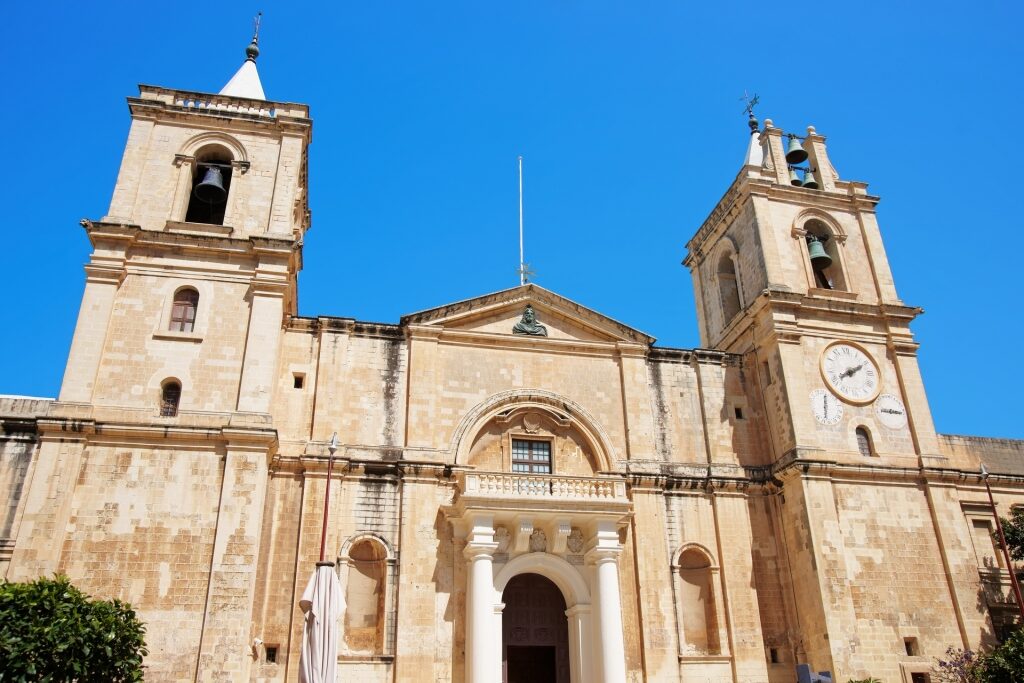
St. John’s Co-Cathedral
History comes to life in the compact Maltese capital, in art, architecture, grand old palaces, churches and the impressive fortifications that guard the city. You’ll gain an insight into the ways of the wealthy Knights of St. John here, as well as a deeper understanding of the bravery and suffering of the islanders during World War II.
In addition, Valletta is one of the most beautiful Medieval cities in Europe. This gorgeous and friendly destination is perfect for wandering around, stopping for coffee, browsing the shops and galleries, or enjoying a long lunch overlooking the sparkling harbor.
History & Culture
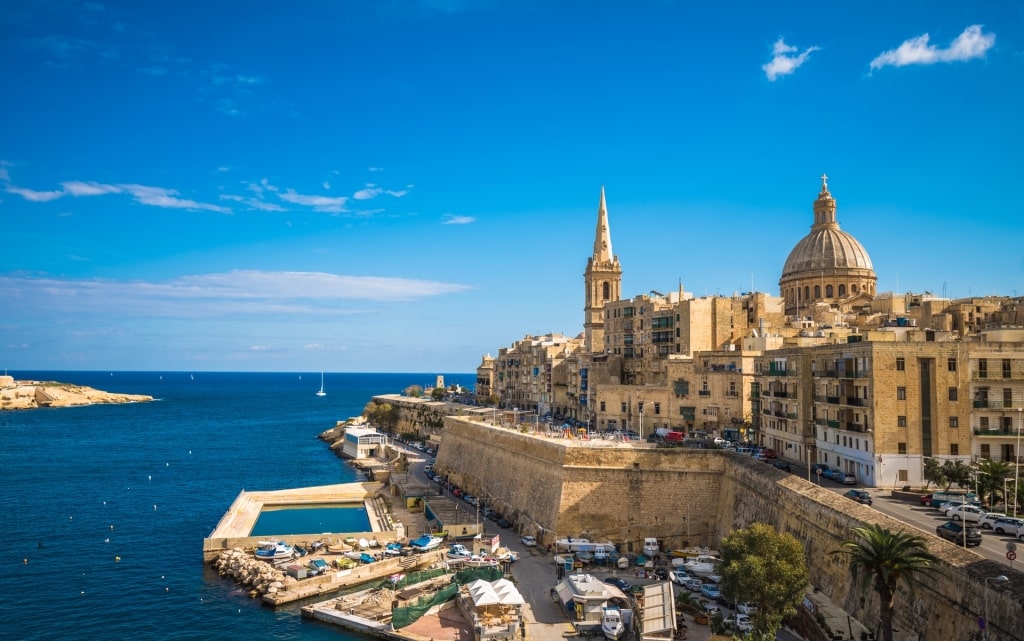
Valletta
Valletta might be one of the smallest European capitals, but it is packed with more historic sites than most—in fact, the whole city is a UNESCO World Heritage Site. The city was founded in 1566 by the Knights of St. John and, incredibly, built in just 15 years.
Even before the Knights arrived in 1530, Malta had long been strategically important. For thousands of years, it had been ruled by successive waves of Phoenicians, Romans, Arabs and Normans.
The Great Siege of Malta in 1565 was a turning point in the war between the Ottoman Empire and the Crusaders and you’ll see the incredible 16th-century paintings in the Grandmaster’s Palace that depict these battles.
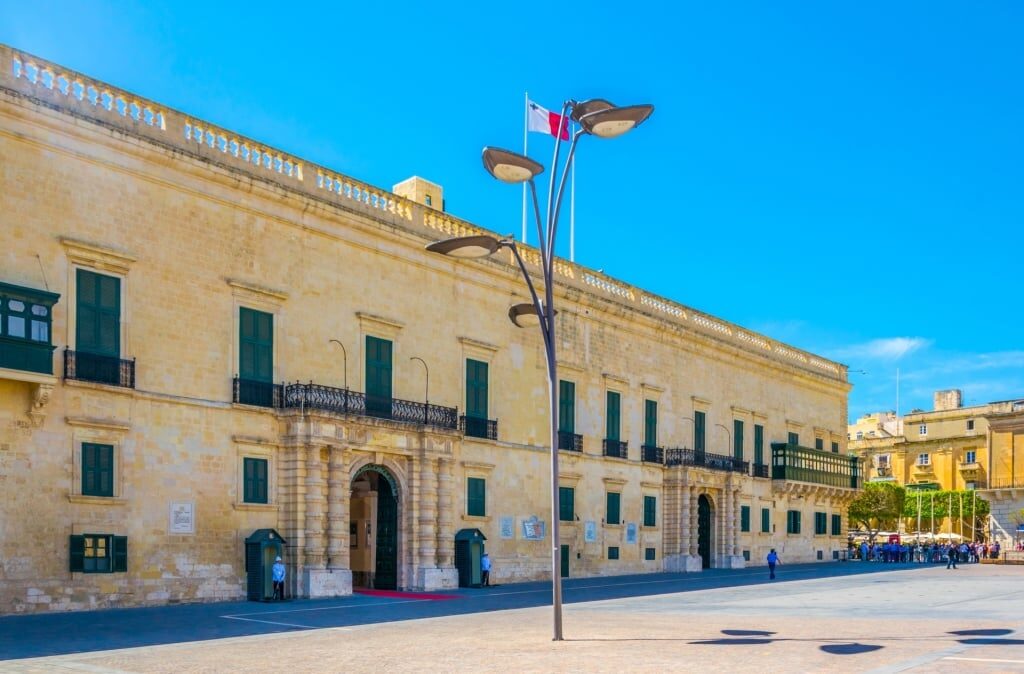
Grandmaster’s Palace
This ornate palace was established in 1571 as the seat of the Knights’ government and their residence. Over the years it was enlarged by successive Grandmasters, became the center of government until 2015, and today it is the official home of Malta’s president.
The Knights ruled Malta until 1798, after which France briefly occupied the island, only to be ousted by the British in 1800. The island was a British protectorate and an important naval base, gaining independence in 1964 and becoming a republic in 1974.
The Second World War was an especially dark period in Malta’s history. The island was bombed mercilessly by Italy and Germany and besieged for two years and four months, during which the people suffered incredible hardship. The whole island was awarded the George Cross by Britain’s King George VI for the bravery of the people, and it’s this symbol that you see on the Maltese flag today.
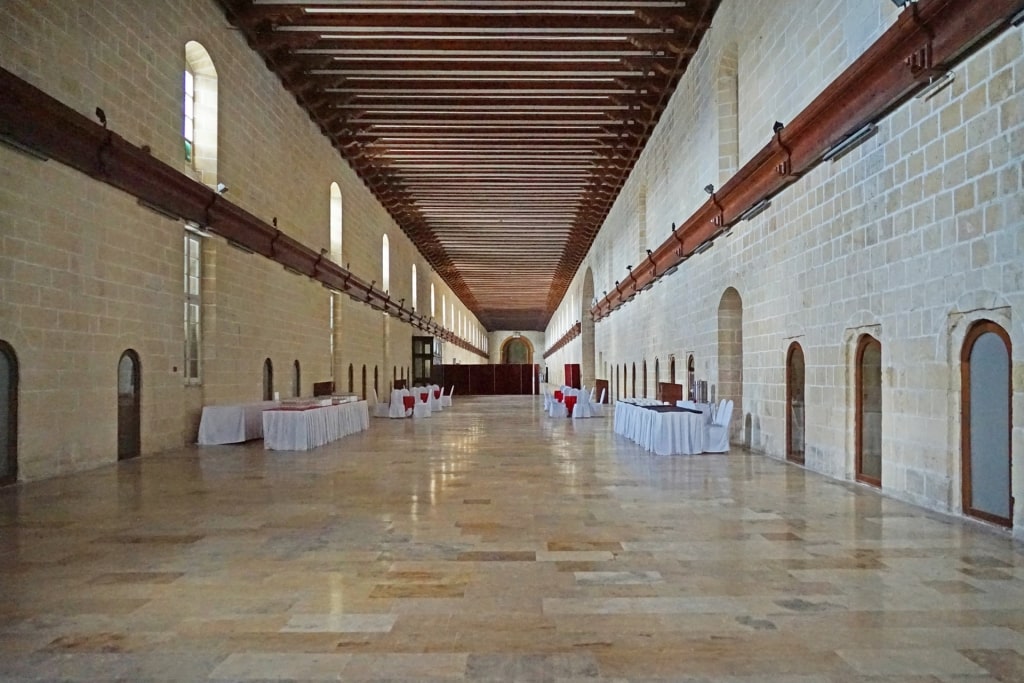
Sacra Infermeria Photo by Jean-Pierre Dalbéra on Flickr, licensed under CC BY 2.0
For an excellent overview of Malta’s 7,000-year history, go see The Malta Experience. This fascinating 45-minute audio-visual show is shown six times a day at Sacra Infermeria, close to Fort St. Elmo, and offers insights that will make exploring Valletta even more rewarding.
Valletta has undergone impressive renovations over the last few years. The city was named European City of Culture of 2018 and a series of projects saw a massive revitalization of neglected historical sites and the construction of the striking Renzo Piano-designed City Gate and new parliament buildings.
Maltese culture is inextricably entwined with its history of foreign occupation and its position between Europe and Africa. The language is unique to Malta—a mix of Arabic dialects and European influences, particularly Sicilian—but luckily for visitors, English is also an official language.
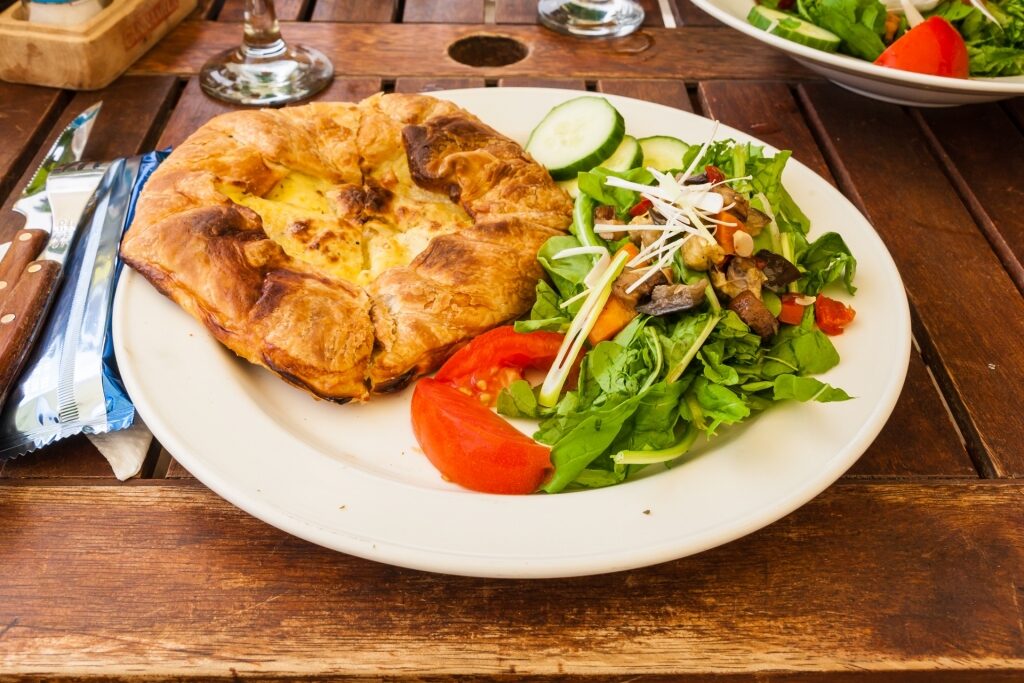
Maltese cuisine
Similarly, Maltese cuisine reflects an exciting blend of North African and Southern European flavors. The people are friendly and hospitable; tourism is a major source of income and visitors are always made welcome.
Tips for Visiting Valletta
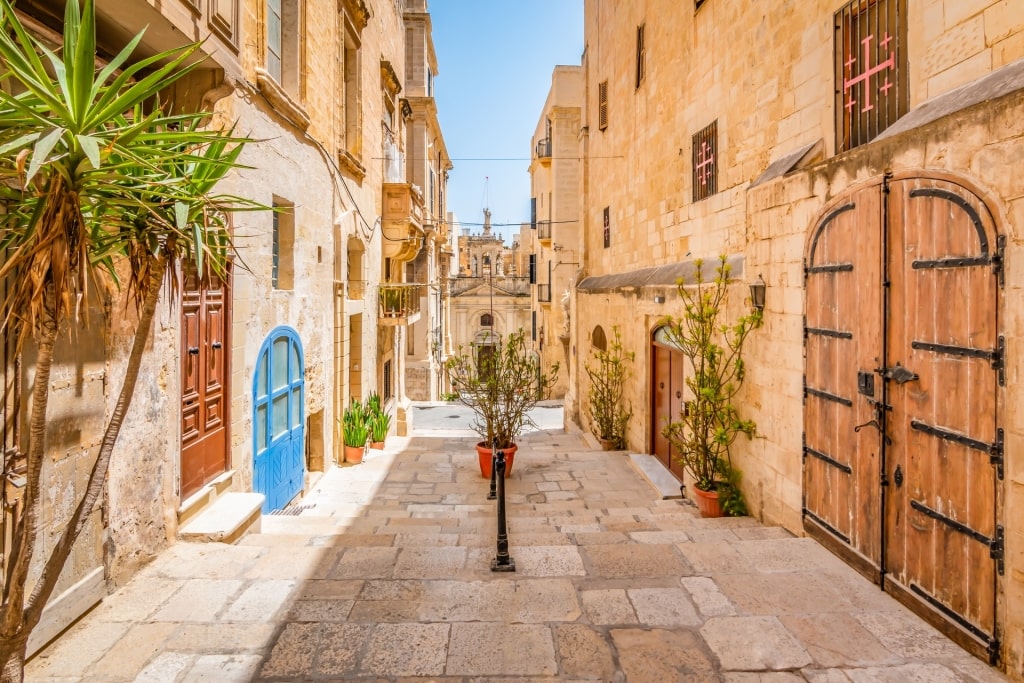
Valletta
Because Valletta is so compact, most of the main attractions are within easy walking or cycling distance from each other. Many areas are pedestrianized and although it’s quite hilly, distances are short. Alternatively—or additionally—a harbor cruise offers a wonderful perspective of the city.
You can fit in a lot of historic sites in one day but allow yourself time to wander the streets and piazzas to soak up the ambiance, sit in the sun for lunch or a coffee, or do a spot of shopping. Most shops in the city center are open all day Monday through Saturday but smaller establishments close for siesta between 1 p.m. and 4 p.m.
Things to Do in Valletta, Malta
Stroll the Upper Barrakka Gardens
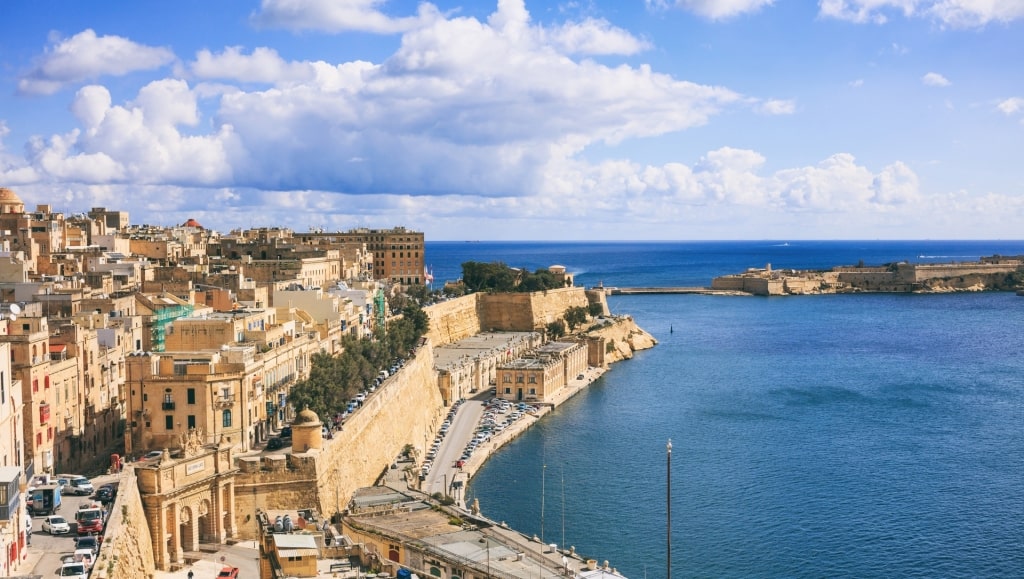
Upper Barrakka Gardens
Visiting the Upper Barrakka Gardens is one of the best things to do in Malta. The elegantly colonnaded gardens were created in 1661 on the Bastion of St. Peter and Paul, the highest point of the city walls, as a private exercise area for the Knights.
The views of the Grand Harbour and the old towns of Senglea and Vittoriosa are spectacular and if you’re there at midday or 4 p.m., you’ll see—and certainly hear—the cannon being fired from the Saluting Battery just below the main terrace and garden. There’s a handy kiosk onsite, which is open all day for coffee, drinks and delicious pastries.
Marvel at the Grandmaster’s Palace
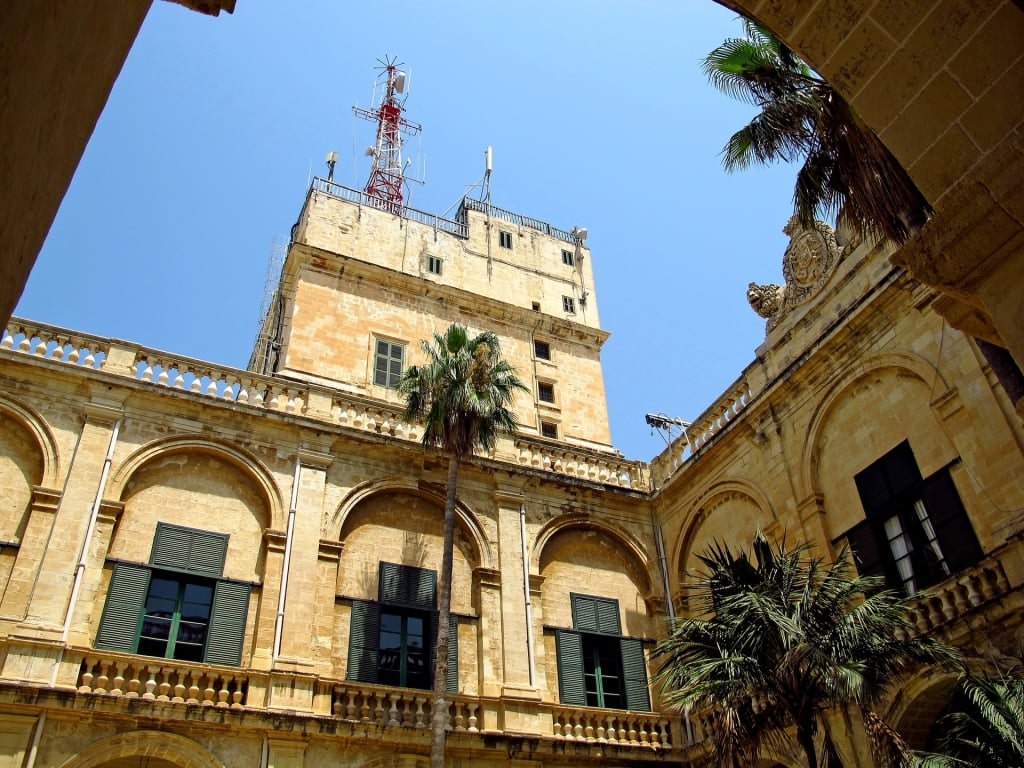
Grandmaster’s Palace
Valletta boasts palaces aplenty, but the biggest and arguably most historically significant is the Grandmaster’s. The palace and state rooms are built around two impressive courtyards; inside, the Council Chambers feature exquisite tapestries, woven in France some 300 years ago, and the State Apartments.
A highlight for many visitors is the Palace Armoury, which houses an impressive collection of suits of armor and weapons. Look out for the breastplate worn by Grandmaster Jean Parisot de la Valette, founder of Valletta.
See a Priceless Caravaggio
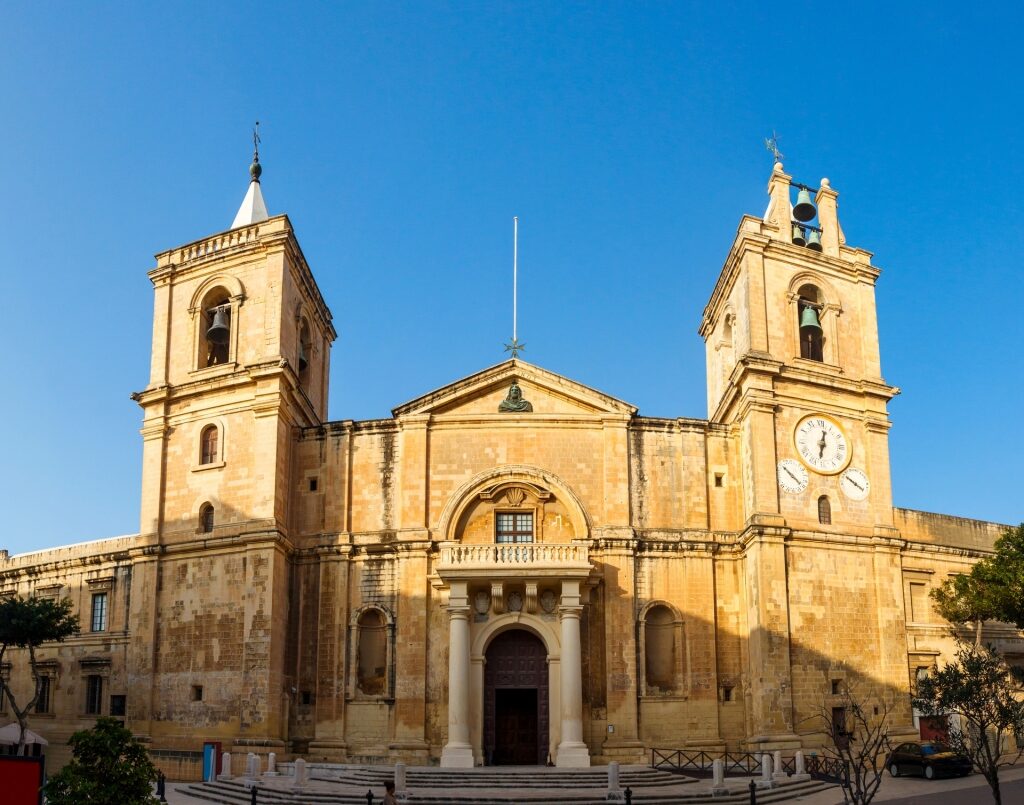
St. John’s Co-Cathedral
St. John’s Co-Cathedral, one of the most beautiful churches in the world, was designed by the architect of many of the Knights’ prominent projects, Gerolamo Cassar, and built in the 1570s. The cathedral’s unfussy exterior gives no hint of its vast, ornate interior, which is home to Caravaggio’s famous painting, the grisly “The Beheading of St John the Baptist”.
While the Caravaggio is the best-known attraction, first-time visitors will also be amazed by the dazzling marble-tombstone floor and silver- and gold-encrusted pillars and walls. There are nine chapels within the cathedral, each a Baroque masterpiece; here, you’ll learn more about the Knights’ “langues”, or different nationalities within the order.
Lose Yourself in Art at MUZA
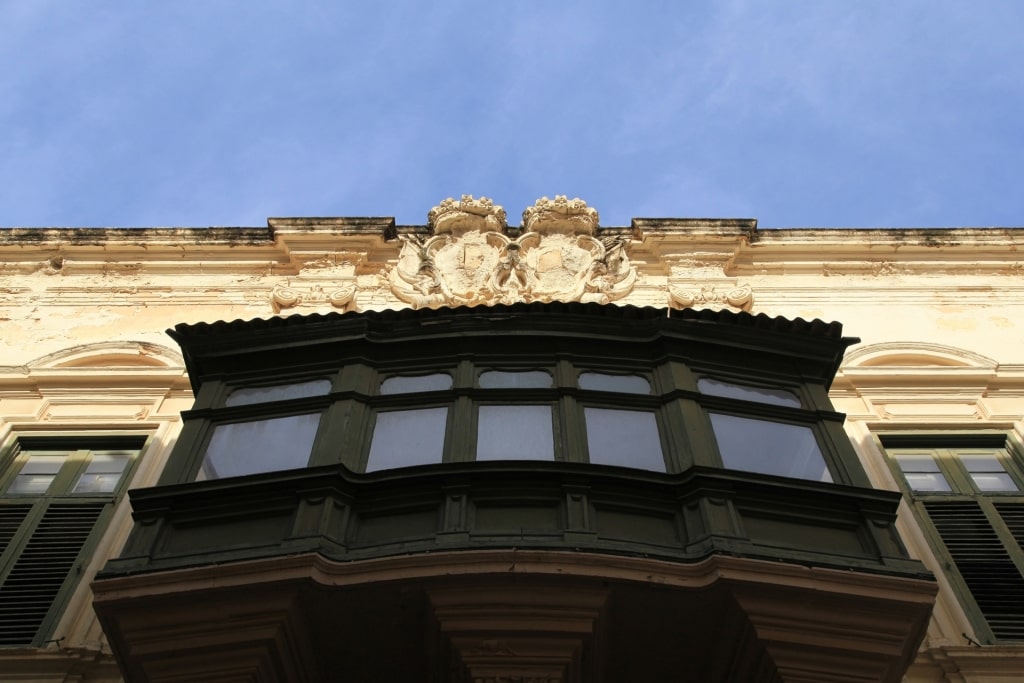
MUZA Photo by Frank Vincentz on Wikimedia Commons, licensed under CC BY-SA 3.0
Art lovers should definitely make time to visit MUZA, one of 2018’s European City of Culture projects. Housed in the beautifully restored 16th-century Auberge d’Italie, artworks are grouped into four main themes—The Mediterranean, Europe, Empire and The Artist—so you’ll see pieces by contemporary artists alongside classic masterpieces.
MUZA’s restaurant is a great spot to stop for a drink or lunch in between sightseeing—it’s something of a work of art in itself. The Bar-Café area is in the original Auberge’s kitchen, the more formal Donato Room is the main dining room, or you can dine alfresco in the lovely Mediterranean courtyard.
Step Back in Time at the National Museum of Archaeology
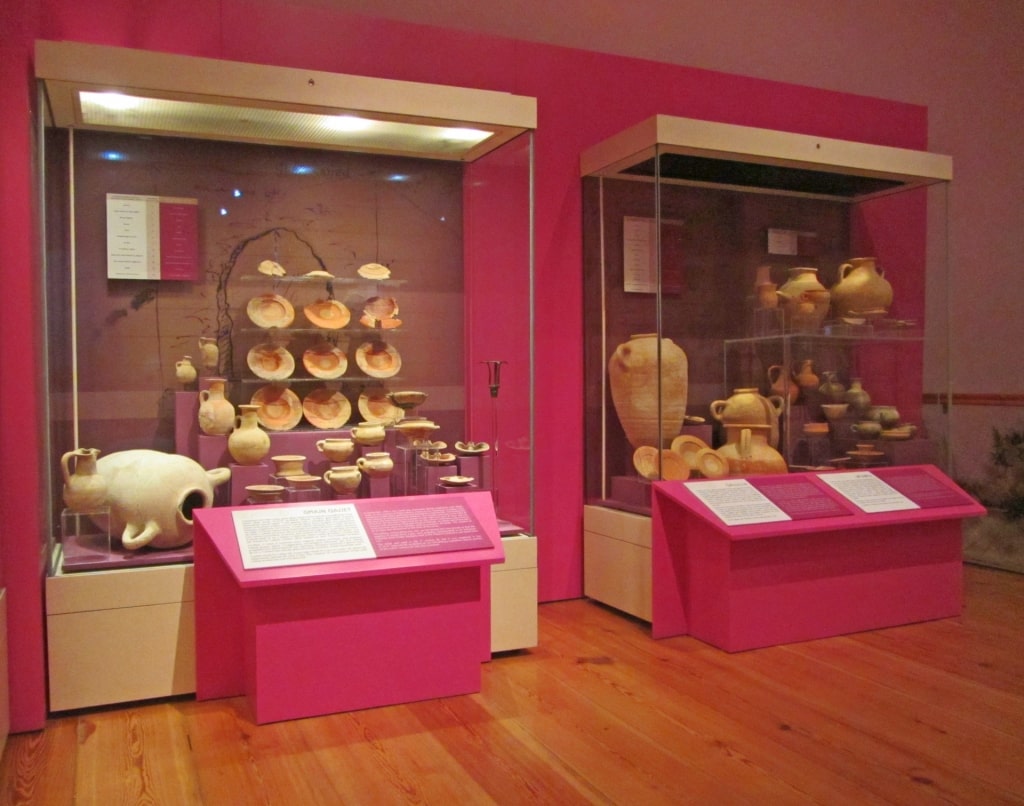
National Museum of Archaeology Photo by Stefan Bellini on Wikimedia Commons, licensed under CC0 1.0
This is the place to go for really ancient history—the museum’s collection of artifacts dates back to 5000 BC (the Neolithic period) and goes up to about 400 BC (the Phoenician period). The museum is located in the Auberge de Provence and its lavish interior is an outstanding example of Valletta’s Baroque design—it’s worth visiting just to see the Gran Salon.
If you are planning to take a tour to any of Malta’s archaeological sites, the museum offers an invaluable background to the country’s early and pre-history.
See Contemporary Architecture at City Gate
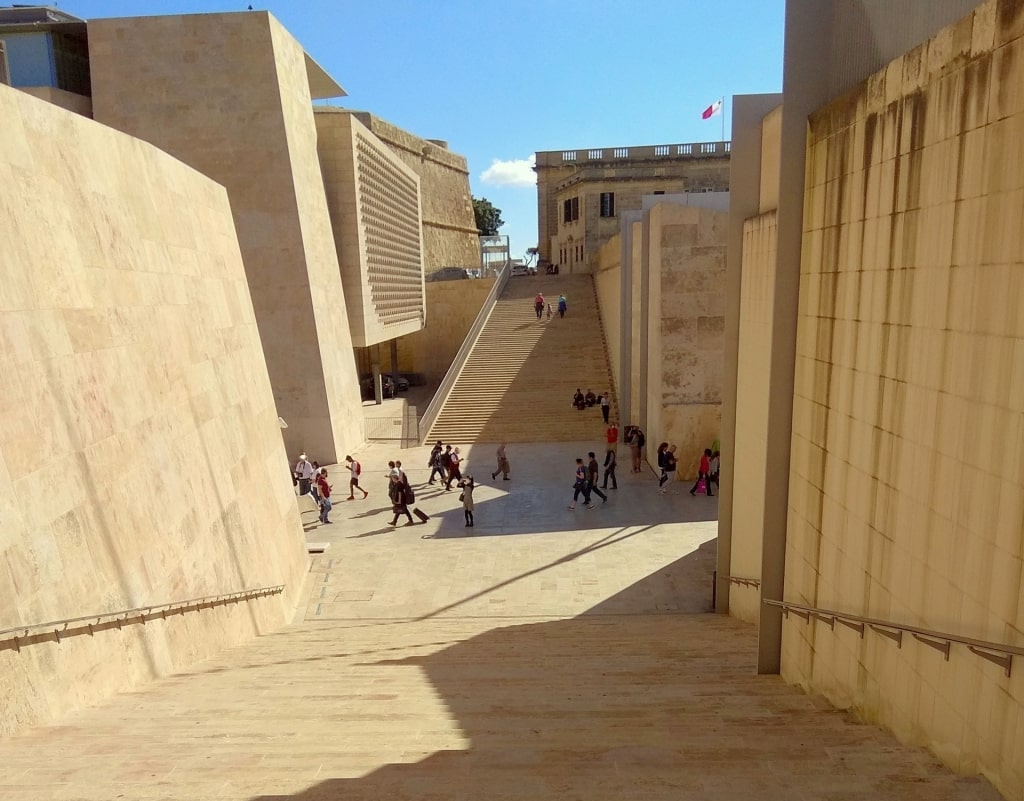
City Gate
Valletta’s City Gate has been through a number of redesigns and rebuilds over the past 500 years. Today’s iteration forms part of the extraordinary complex that was completely reimagined by Renzo Piano.
It includes the Parliament building, an open-air theater within the ruins of the former Royal Opera House, and steps and a lift to the “ditch” below, which has been landscaped and is now an attractive public garden.
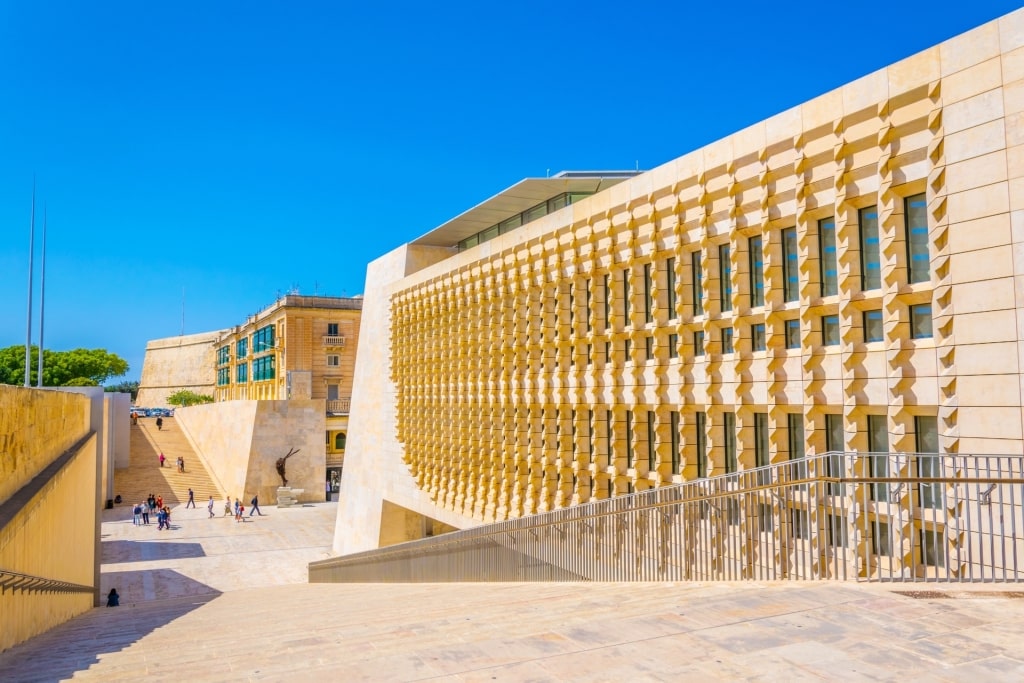
Parliament building
While the Parliament building is entirely new—two massive stone blocks that appear to float in the air—its courtyard was designed to open up views of the ancient St. James Cavalier. The open-air theater uses amazing cutting-edge technology to transform the restored opera house from a piazza to a seasonal performance space, complete with nearly 1,000 seats.
Read: 15 Best Beaches in Malta
Food & Drink
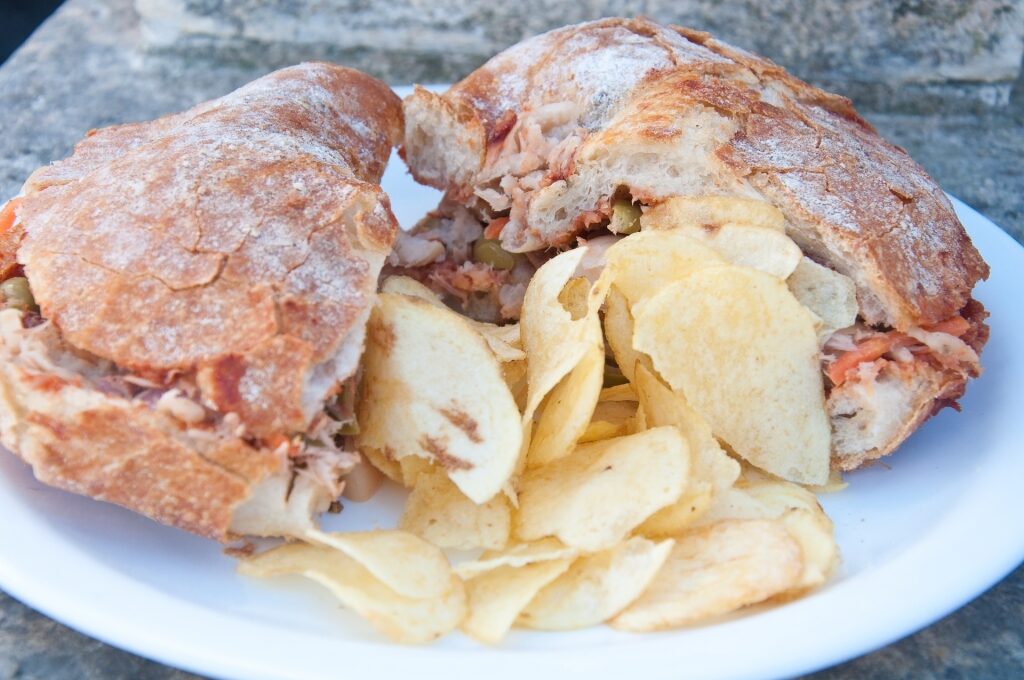
Ftira
Valletta has a thriving cafe and restaurant scene. You can indulge in everything from homemade gelato to rustic, seasonal Maltese and Mediterranean cuisine, and sweet and savoury street food such as ftira (stuffed flatbread), pastizzi, qassatat (bigger pastizzi) and imqaret (decadent deep-fried pastries stuffed with dates and spices).
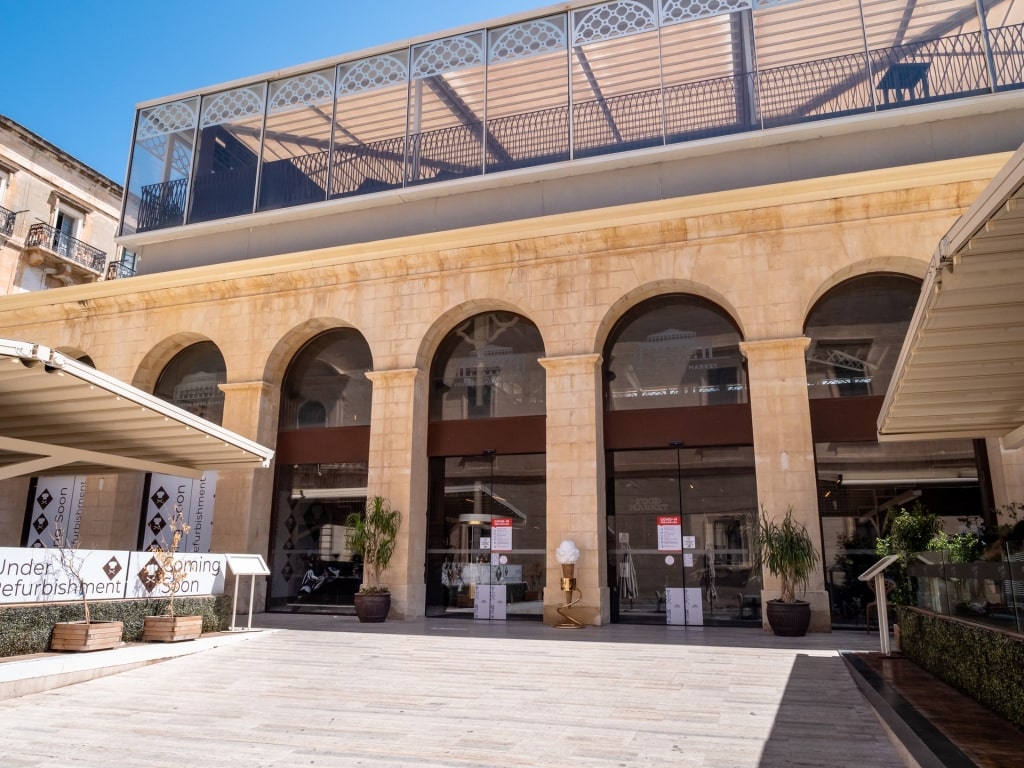
Is-Suq Tal-Belt
The busy food court at Is-Suq Tal-Belt, Valletta’s market, is a good place for a quick refuel. Check out Gululu for genuine Maltese dishes (seafood, salt cod, sheep’s cheese, olives and Maltese sausage are typical ingredients), and Ta’ Kelinu for irresistible pastizzi.
At the painstakingly restored Valletta Waterfront, you’ll find dozens of sophisticated bars and restaurants that serve anything from European bistro-style food to vegan and vegetarian menus, Cantonese cuisine, and superb seafood.
If you’re looking for the traditional dishes that Malta is known for, such as rabbit stew, fish pie (lampuki), bragioli (a beef dish) and kapunata (like ratatouille), try Noni (for a modern twist on the classics), Rampila or Legligin. For fine dining with fabulous views, you can’t do better than the Harbour Club.
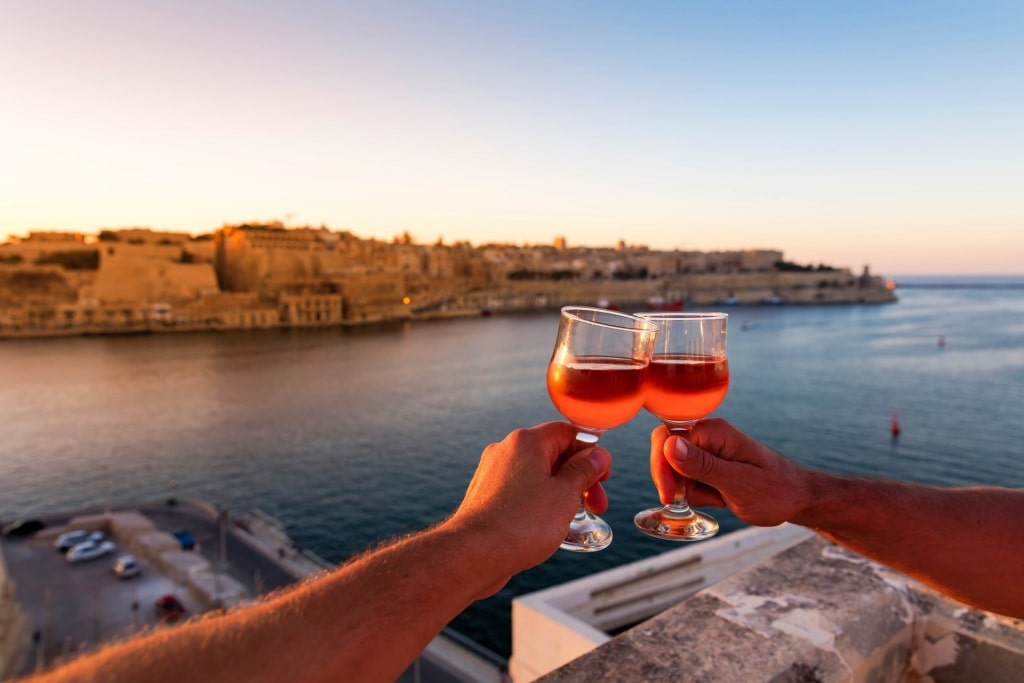
Maltese wine
Wine-making is enjoying a comeback in Malta, and aficionados should definitely seek out Maltese wines—very little, if any, is exported. Trabuxu Bistro stocks a great selection of local and international wines.
Best Time to Visit Malta
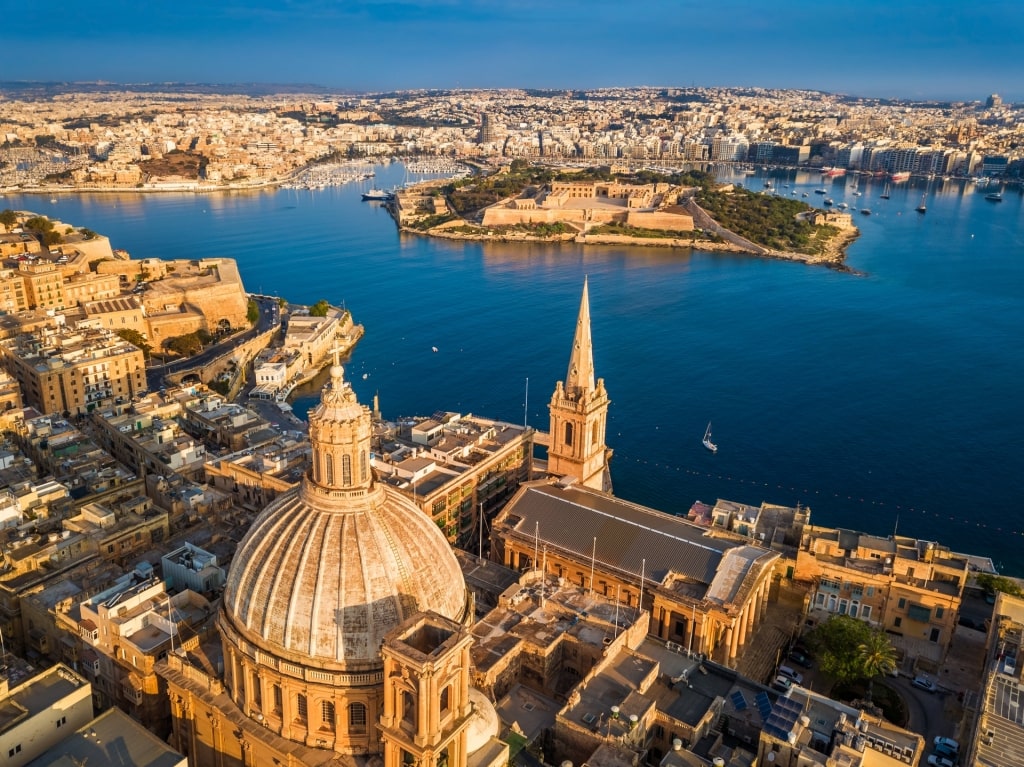
Valletta
Malta has a typical southern Mediterranean climate. The best times to visit are May, June, July, September and October, when temperatures are warm.
Throughout the year, Maltese people in Valletta celebrate numerous religious, cultural and national events, often accompanied by spectacular firework displays.
Major events include the Malta International Arts Festival (usually held in June and July), showcasing Maltese and international artists in theater, dance, music and visual arts across several venues, and Malta Independence Day, which is marked by parades and festivities everywhere in Malta on September 21.
Read: Insider’s Guide to Mdina, Malta
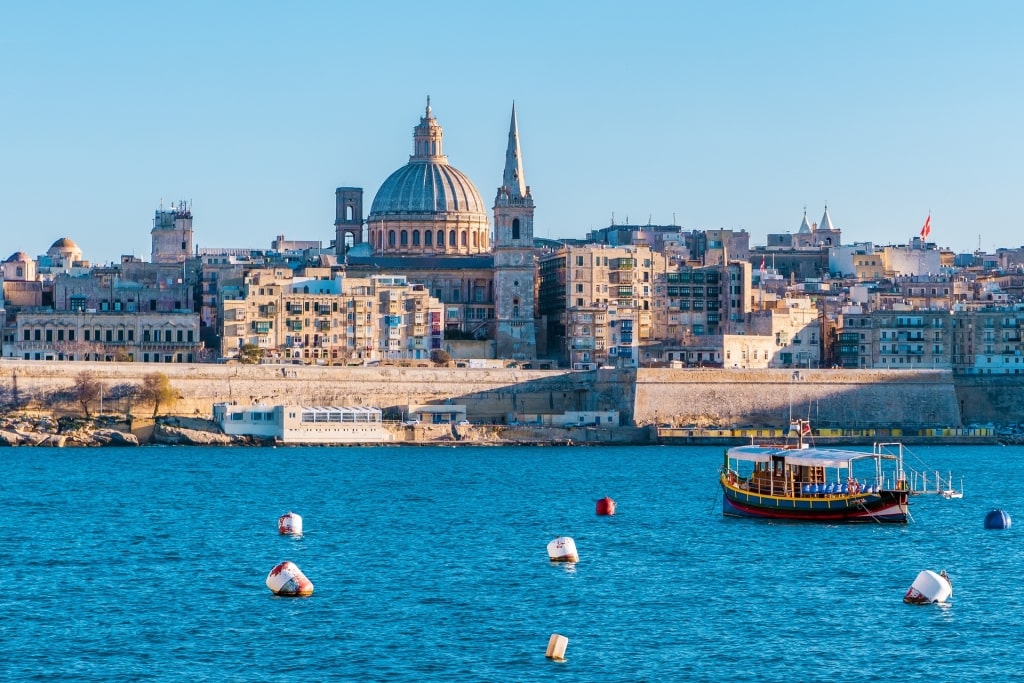
Valletta
Experience Malta’s rich history and culture on a cruise to Valletta with Celebrity. Browse itineraries and plan an exciting vacation today.
